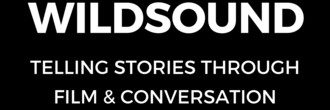 It was definitely an education chatting with story artist Yoriaki Mochizuki. He chats about working storyboarding animation movies and how it can be a much more creative process than working on live action films, and so much more….
It was definitely an education chatting with story artist Yoriaki Mochizuki. He chats about working storyboarding animation movies and how it can be a much more creative process than working on live action films, and so much more….
Matthew Toffolo: How was your storyboard experience working on STORKS? When did you come aboard the film? Who did you mainly collaborate with?
Yori Mochizuki: I joined the Storks team in the spring of 2013. I collaborated primarily with directors Nick Stoller, Doug Sweetland and editor John Venzon. The story team worked in one open room which allowed us to discuss the story as a group regularly. We built animatic for the film with storyboards and temp sounds and tested it to ensure the story was working. Storks was a very special project for me because my daughter was one-year-old at the time and I used a lot of my parenting experiences as inspiration for my storyboards.
MT: You also worked as a Story Artist on the massive successful film THE LEGO MOVIE. What did that job entail?
YM: The LEGO Movie was one of the most creatively satisfying experiences. I collaborated closely with directors Phil Lord and Chris Miller as well as co-director Chris McKay. I was encouraged to come up with my own ideas and to create sequences, often even without a script. One of my favorite experiences on the LEGO Movie was when I storyboarded the live-action sequence. First I storyboarded it purely from my imagination. Once the set was built, I revised it with Phil and Chris. Then I worked side by side with editor Dave Burrows to create the animatic. Phil and Chris shot the sequence based on our animatic in the sound stage next door. It was one of the most harmonious filmmaking processes I have been privileged to be part of.
MT: What advice would you have for people who would like to do what you do?
YM: Being a story artist is like being a director, writer, cinematographer, editor, and actor, all at once. It’s important to study visual storytelling and to develop your own point of view. No matter what job you are working on – big or small – always do your absolute best because that’s the only way you can grow as a filmmaker.
MT: Would you like to storyboard and collaborate on a live action film?
YM: I enjoyed collaborating with Guillermo del Toro on Pacific Rim, but, generally in live action films storyboard artists can influence the story visually, but not necessarily the story itself. On animated films, story artists literally shape the stories. There’s a clear distinction between storyboarding live action and storyboarding animation and each requires different skill set. Personally, I enjoy working in animation because I get to create the story and find the process much more creative and collaborative.
MT: What movie have you watched the most times in your life?
YM: I grew up watching a lot of Hayao Miyazaki’s films. Star Wars, Back to the Future and Dead Poets Society are some of my favorites and I have watched them many times.
MT: What first attracted you to work as a storyboard artist?
YM: I drew my own comic books as a kid and I storyboarded all my student films. When I moved to Los Angeles, I worked as production assistant for a TV pilot and met storyboard artist, Joe Musso. Joe was generous enough to teach me how to storyboard and helped me land my first commercial jobs. That’s where my storyboard artist career began.
MT: Where did you grow up? When did you first start drawing?
YM: I was born in Tokyo and grew up in a suburb of Saitama, Japan. I started drawing before I can even remember. I still have some drawings from my early childhood of giant robots.
Selected Yoriaki Mochizuki Storyboards:




Reblogged this on WILDsound Writing and Film Festival Review.
LikeLike
Reblogged this on WILDsound Writing and Film Festival Review.
LikeLike
Reblogged this on WILDsound Writing and Film Festival Review.
LikeLike
Reblogged this on Fantasy/Sci-Fi FILM & WRITING FESTIVAL.
LikeLike
Reblogged this on WILDsound Writing and Film Festival Review.
LikeLike
Reblogged this on WILDsound Writing and Film Festival Review.
LikeLike